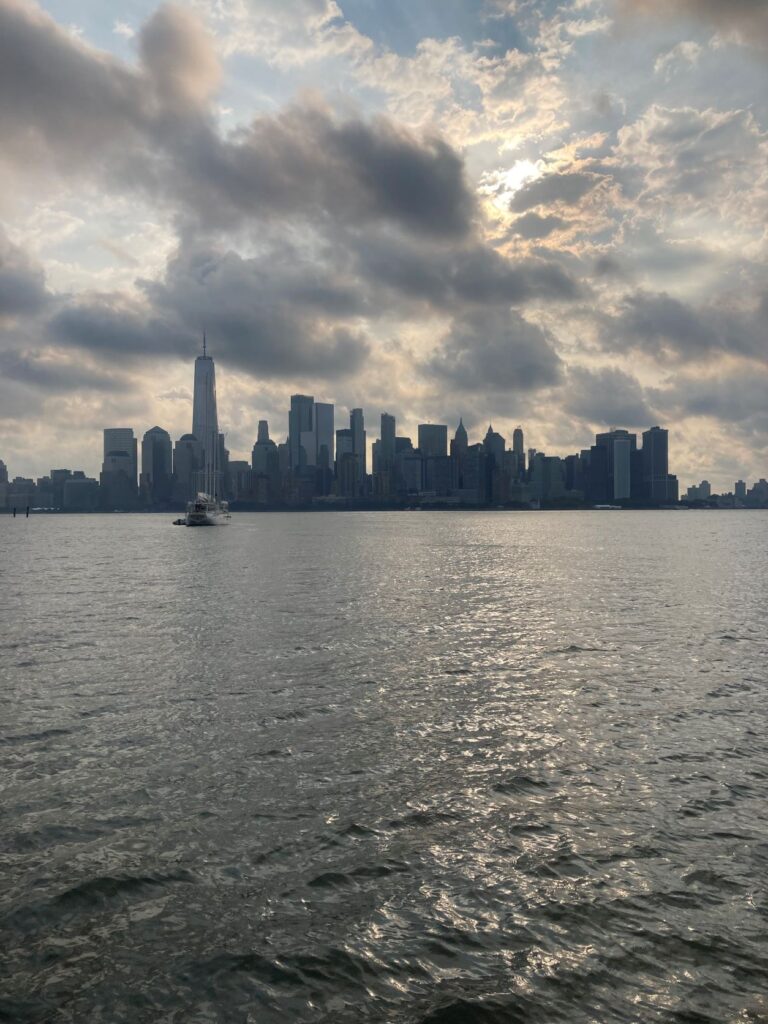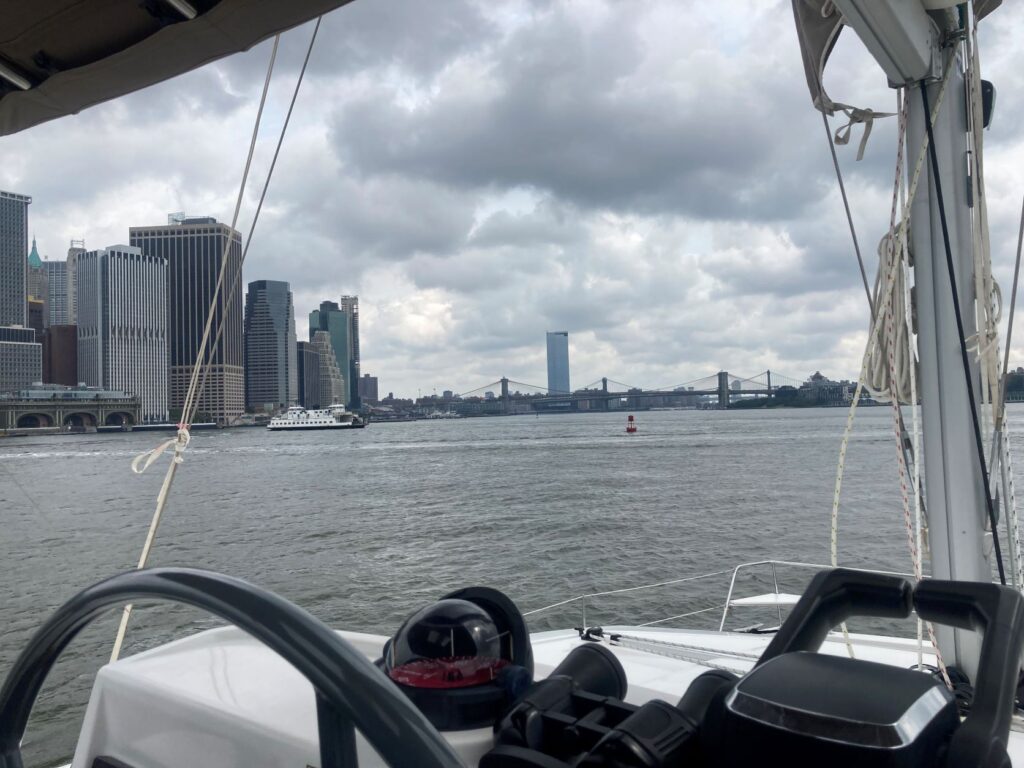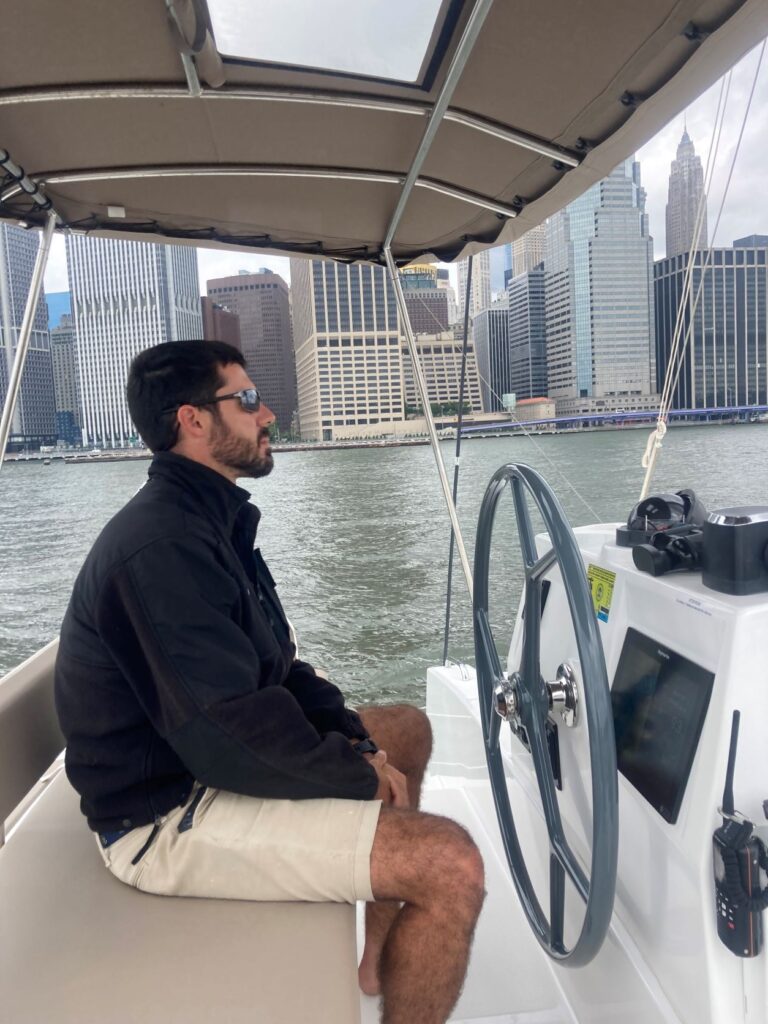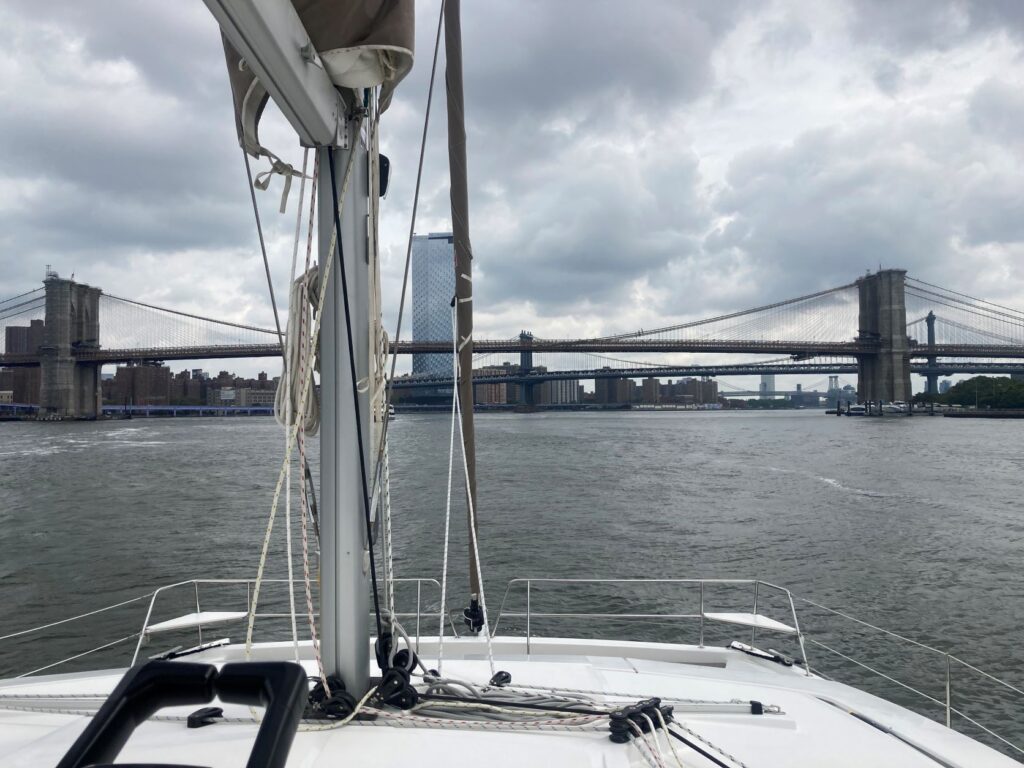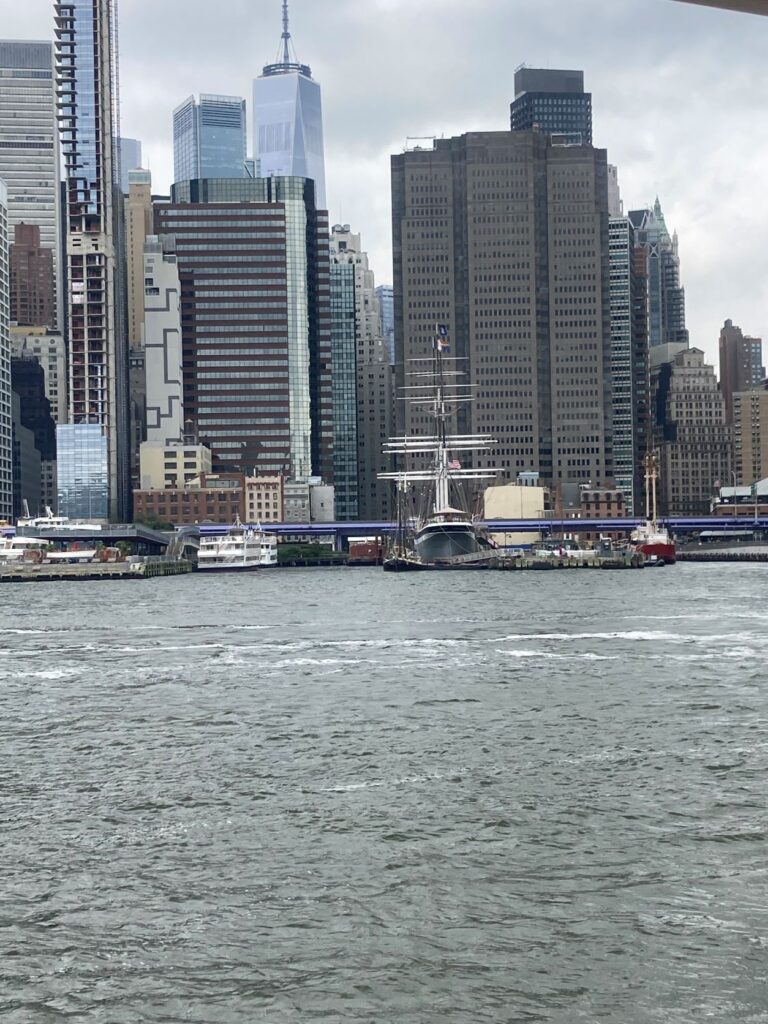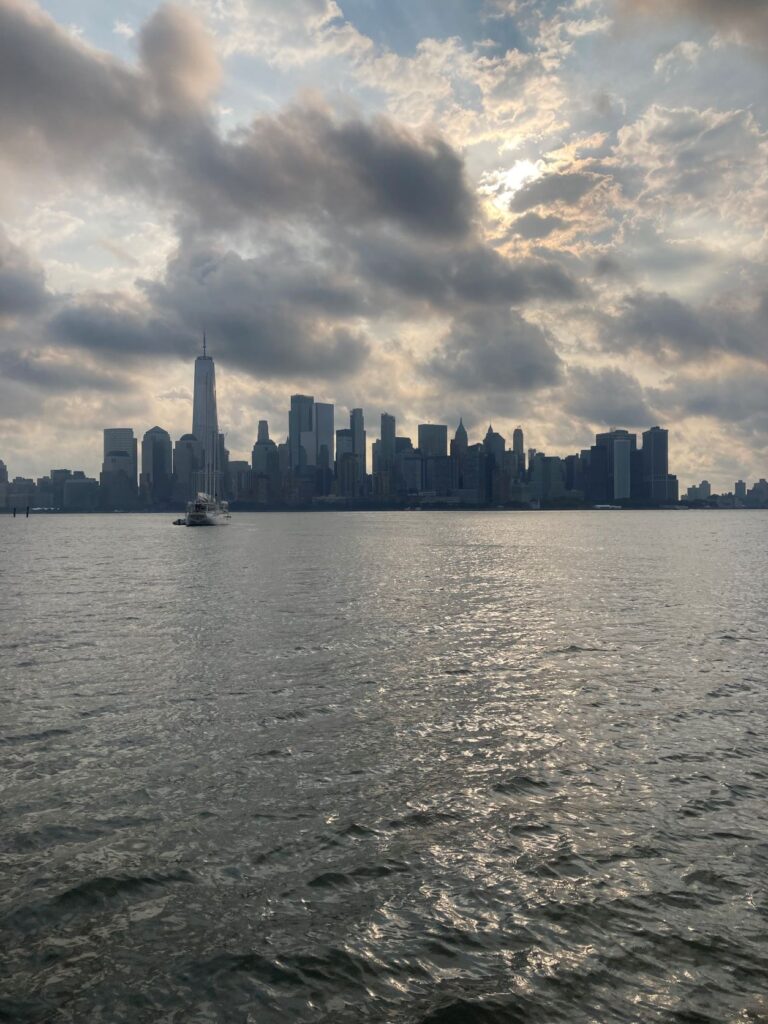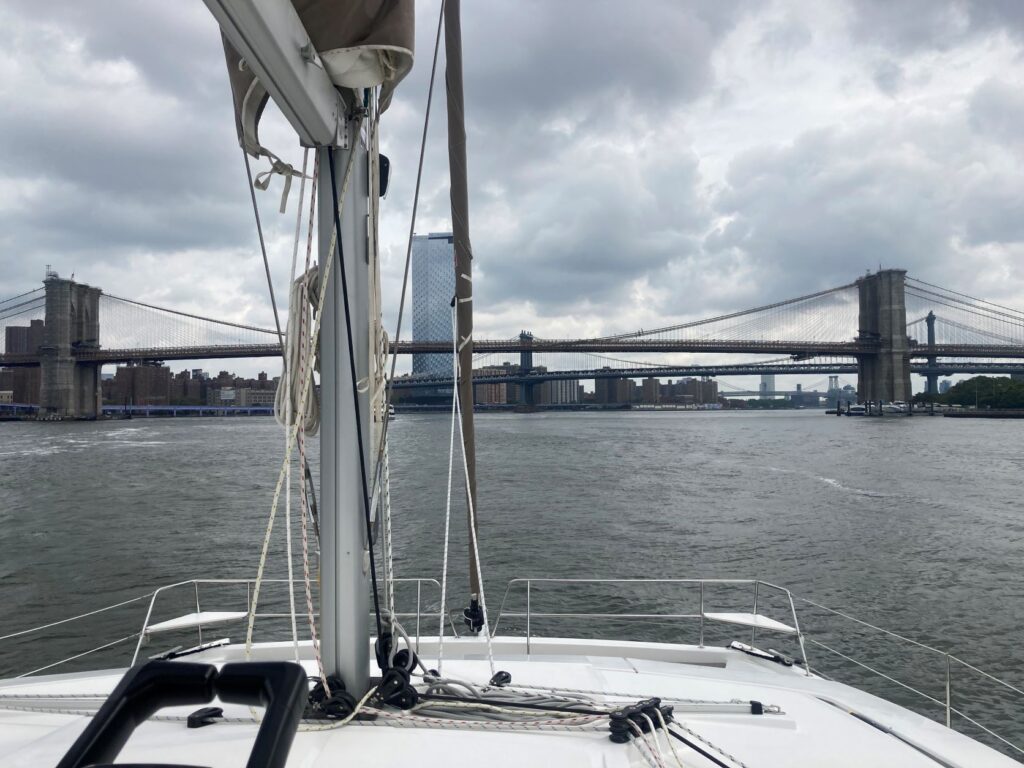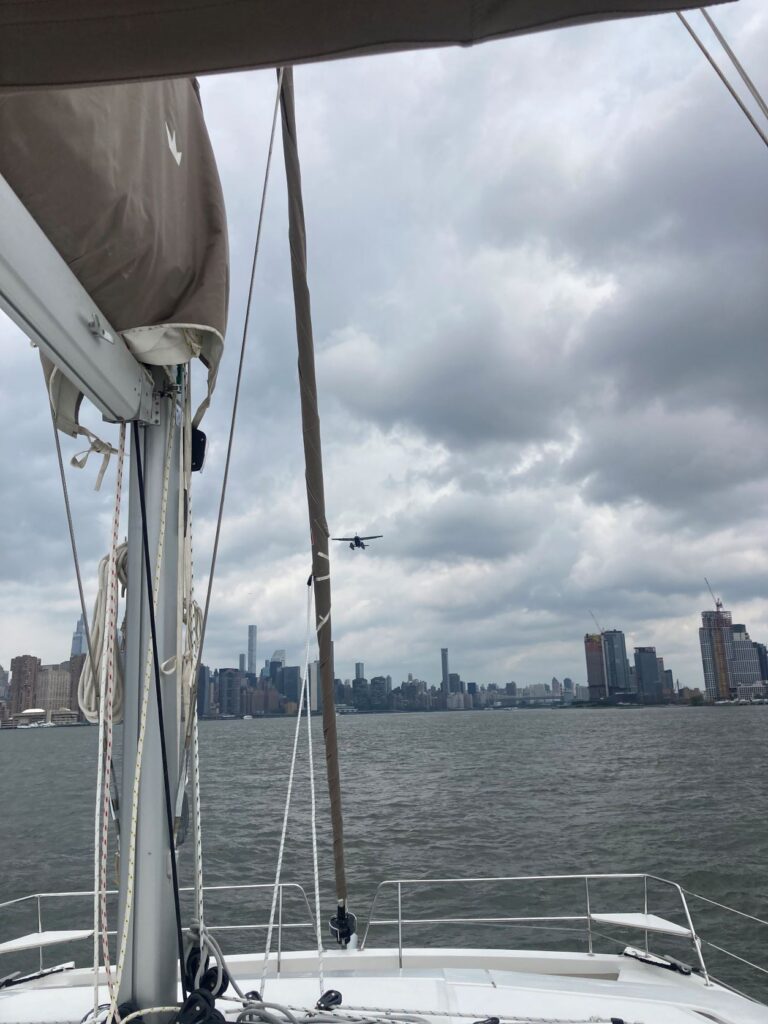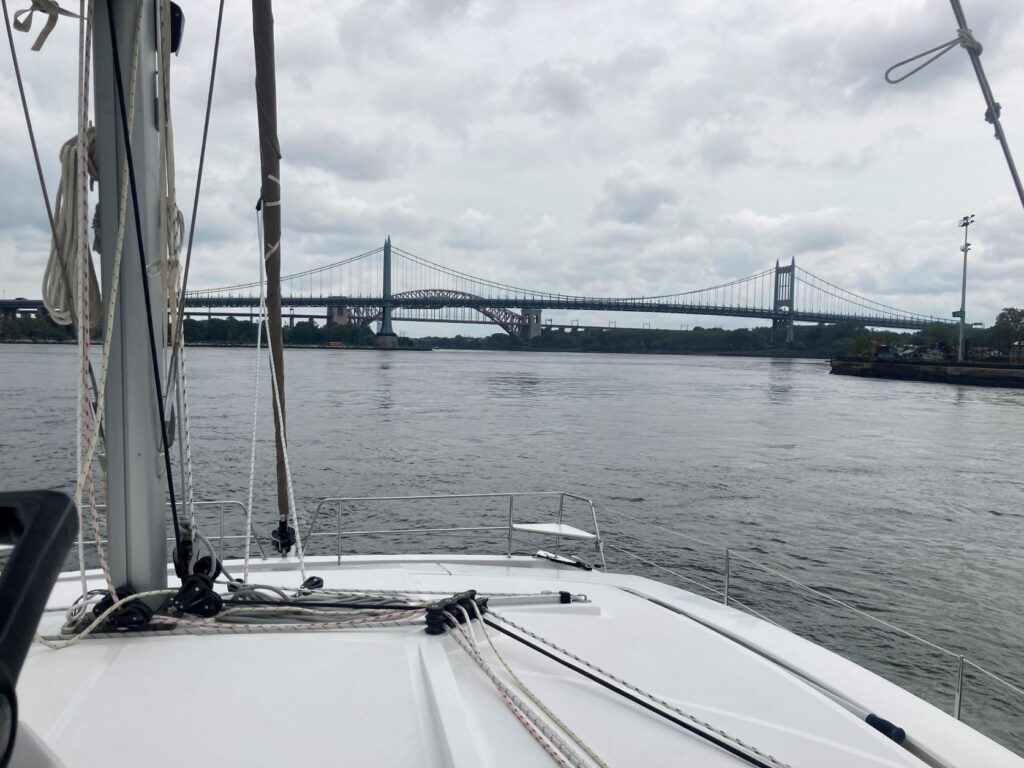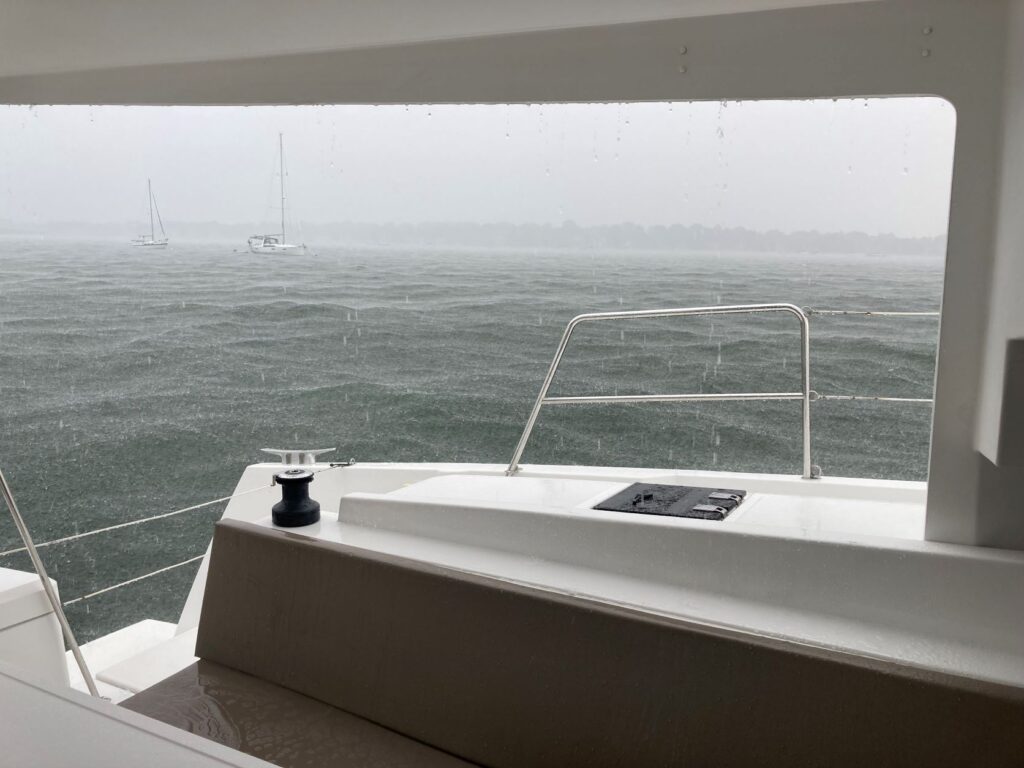Waking up to an overcast sky, I sipped my morning tea as I gazed at a cloud covered view of Manhattan. Since we needed to plan our departure around the tides, we weren’t planning to get underway until the afternoon, so Eitan took advantage of the downtime to sleep in. I enjoyed the lazy start to the morning until the conditions outside started to get windy and Eitan woke up to check the weather. The radar indicated a thunderstorm and strong winds were headed our way and would be upon us about the same time we would be pulling anchor. This put us in a bit of an awkward situation because we needed to pass through Hell’s Gate today.
Hell’s Gate is a narrow tidal strait located on the East River at the center of the confluence between New York Upper Bay, Long Island Sound, and the Harlem River. As indicated by its name, this area is particularly difficult to navigate due to the tidal flows and opposing currents from the connecting bodies of water. For obvious reasons, current is important to consider. Too much opposing current means you aren’t going to cover much ground, but too much following current may reduce the effectiveness of the rudders and cause difficulties steering the boat. To safely transit Hell’s Gate you need to look at the tides and ideally transit through at slack tide when the conflicting currents are weakest. On this day, slack tide was at 2pm, which was problematic because that was when the thunderstorms were predicted to roll through. So, it seemed we would either have to deal with strong currents or strong winds and rain.
Eitan decided to go with the former and planned a potential bail out anchorage if the situation seemed sketchy once we arrived at the strait. With mention of the slightest unfavorable conditions, and winds already at 20 knots, I did my best to manage my anxiety and tried only once to convince him that we should just stay at anchor and wait for a more favorable combination of weather and tides. As we made our way up the East River, conditions weren’t nearly as bad as what I had conjured up in my head. It was interesting to see the different opposing currents and resulting whirlpool effect it created. We experienced about 5 knots of following current and were sliding through the strait at over 13 knots. Once we were safely into the Long Island Sound, Eitan seemed a bit disappointed it wasn’t the notorious navigational adventure he had heard so much about from other sailors.
We continued to motor our way into the sound. The difference between a bay and a sound is still unclear to me. Some definitions require a bay to have only one entrance to the ocean whereas a sound can have multiple. Other definitions say a sound is larger and deeper than a bay. Either way, we were officially in Long Island Sound and I looked back toward the fading New York City skyline as it became darker and darker with the developing storm. The weather had been getting colder each day as we journeyed further north and Eitan and I had officially broken out our jackets and long pants that had been hidden away for quite some time. To make the cooling temperatures even worse, the charter boat didn’t have a dodger, or any other wind/weather protection for that matter, at the helm station, so we experienced the added wind chill on top of the cold temperatures.
We made it through to the anchorage in the early afternoon, just as the first sprinkles of rain began. It turned out to be a very wet and windy night, so loud that sleep did not come easy. The heavy rain was actually quite a blessing though, because it meant we didn’t have to wash down the (still dirty) boat upon our arrival in Westport the next day, which was the final destination for the boat delivery.
